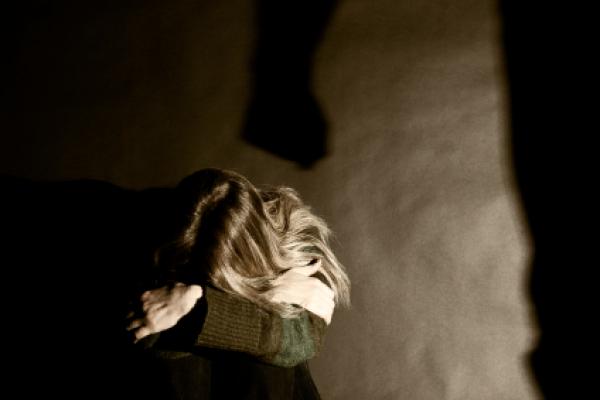“We are unalterably opposed to the presentation of the female body being stripped, bound, raped, tortured, mutilated, and murdered in the name of commercial entertainment and free speech.” – Susan Brownmiller.
Perhaps, whenever an Afghan woman hears the phrase ‘violence against women,’ the image of a tearful woman screaming under the flogging of her husband, will automatically be pictured in her mind. Many others will imagine Sahar Gul screaming bitterly in a dark cellar under the painful torture of her in-laws and her nails are being pulled by pliers. Or maybe, the picture of Sitara will flash through one’s mind and blood oozing from her lips and nose lopped off by her addicted husband before the eyes of her children.
As an Afghan citizen, whenever I hear the above phrase, I, uncontrollably, imagine an addicted man with a keen knife in his hand and her wild laughter resounding in a pitch black cellar walking towards a woman to harm her. In the meantime, I hear the woman sobbing with utmost chagrin imploring the man not to hurt her. After black and white pictures blinking before my eyes for a moment, I see the woman unconscious and blood gushing from her wounds made by the man’s knife.
Sometimes, I shiver with fear to imagine the women’s dead bodies hanging on trees or left in the corners. Moreover, my mind goes numb when visualizing schools girls the corrosive acid sprayed on their faces. I am also touched when picturing the women sobbing deeply in the hospitals for sustaining serious injuries caused by their husbands.
These are all the daily stories of Afghan girls and women. Their rights are violated openly, their noses and lips are lopped off, and they are hanged on trees, killed by ax, shot to dead and lose their lives in terrorist acts.
Shimon Peres say, “You know who is against democracy in the Middle East? The husbands. They got used to their way of life. Now, the traditional way of life must change. Everybody must change. If you don’t give equal rights to women, you can’t progress.”
Afghan women suffered painfully under the Taliban regime. In 2001, Laura Bush in a radio address condemned the Taliban’s brutality to women. In areas they controlled the Taliban issued edicts which forbade women from being educated; girls were forced to leave schools and colleges. Those who wished to leave their home to go shopping had to be accompanied by a male relative, and were required to wear the burqa. Those who appeared to disobey were publicly beaten. The religious radicals routinely carried out inhumane abuse on women. Employment for women was restricted to the medical sector, because male medical personnel were not allowed to treat women and girls. One result of the banning of employment of women by the Taliban was the closing down in places like Kabul of primary schools not only for girls but for boys, because almost all the teachers there were women. Taliban restrictions became more severe after they took control of the capital. In February 1998, religious police forced all women off the streets of Kabul, and issued new regulations ordering people to blacken their windows, so that women would not be visible from the outside.
Mullah Nooruddin Turabi, the Taliban former Minister of Justice said regarding women, “If a woman wants to work away from her home and with men, then that is not allowed by our religion and our culture. If we force them to do this they may want to commit suicide.”
Faranos Nazir, a woman who lived in Kabul at the time of Taliban said, “Because of the Taliban, Afghanistan has become a jail for women. We haven’t got any human rights. We haven’t the right to go outside, to go to work, to look after our children.”
I believe that she has stated the tips of the iceberg. The challenges were much larger. For instance, there were many widowed women who, on the one hand, had no bread-winner for their children, but on the other hand they were not allowed to go out to work or just to beg in the streets. The women who came out without a close male member of their families were beaten severely. For example, Sohaila, a young woman who was convicted of walking with a man who was not a relative, was charged with adultery. She was publicly flogged in Ghazi Stadium and received 100 lashes.
In addition, several Taliban and Al-Qaeda commanders ran a network of human trafficking, abducting women and selling them into sex slavery in Afghanistan and Pakistan. The Taliban often argued that the brutal restrictions they placed on women were actually a way of revering and protecting the opposite sex. The behavior of the Taliban during the six years they expanded their rule in Afghanistan made a mockery of that claim.
Currently, there have happened cosmetic changes in the attitudes towards women. They are still highly vulnerable to violence and cruelties, especially domestic ones, inflicted by men. They seriously suffer physical and mental pressures in the patriarchal society of Afghanistan.
It was really poignant for me to read on a newspaper that Sitarah, an Afghan woman whose nose and lips were lopped off by her husband in Herat province, felt insecure after returning from Turkey. She had a surgery in Turkey and returned to Herat province expressed concern about her security. She asked the government to arrest her husband, who had joined Taliban after mutilating his wife, and punish him for his crime. It was also added in the news that one of her child, who was mentally harmed by the incident, cannot afford to see a doctor.
Zieba Shorish-Shamley rightly reflects the state of Afghan women in her poems, “They made me invisible, shrouded and non-being. A shadow, no existence, made silent and unseeing. Denied of freedom, confined to my cage! Tell me how to handle my anger and my rage?”

